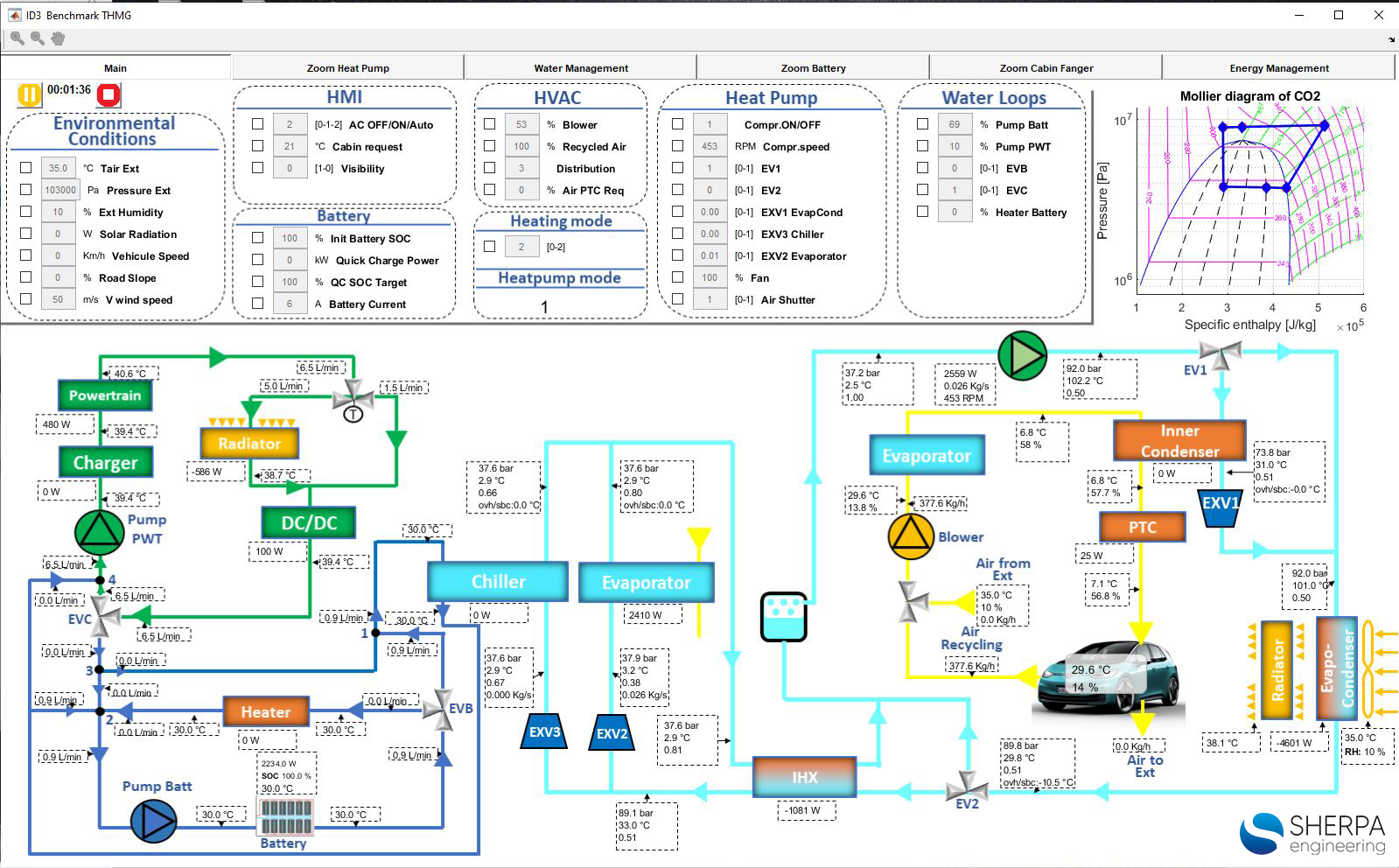
Solutions
SOLUTIONS FOR
ENERGY SYSTEMS
SOLUTIONS FOR
ADAS & AUTONOMOUS VEHICLES
– ENERGY SYSTEMS –
DIGITAL BENCHES TO SUPPORT YOUR DEVELOPMENTS
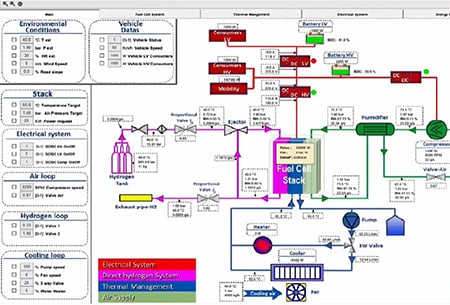
More than just models of your complex systems, better than digital twins of your sub-systems, we have developed over the years an expertise to offer real digital test benches to support the design of your energy systems.
Human in the loop: these digital benches offer a control interface that allows the user to take control in real time of the system parameters, the virtual test conditions or the control settings in closed loop. These simulation benches are easily customisable and can be quickly adapted to your needs.
Some examples:
- HVAC simulator: simple air conditioning system with thermal comfort management
- BEV HeatPump Simulator: complete electric vehicle with heat pump
- Fuel-Cell simulator: electric mobility system with a fuel cell
A real asset to accelerate the dimensioning studies of your innovative technologies, integrated in a model of your electric mobility system environment (rolling, floating or flying).
BENCHMARK SIMULATORS
Studying competing vehicles has always been a source of inspiration for car manufacturers. But the multiplication of models and services makes the exercise costly, particularly because the approach is still very “physical” (instrumentation of competing vehicles and tests on test benches).
In the same spirit as our digital test benches, SHERPA Engineering has developed Benchmark simulators representing in dynamic mode a selection of electric vehicles recently produced in series and presenting innovative technological features:
- The octovalve and dual-zone heat pump of the 2021 Tesla3
- The Jaguar I-Pace heat recovery system
- The VW ID3 CO2 heat pump in
- The Hyundai Kona’s direct heat pump
The simulators are predictive because they are based on physics equations and not on test maps. They cover the main energy subsystems of vehicles:
- Electrical and thermal model of the Powertrain (driver, electric motors)
- Model of electrical components (charger, including quick-charge, DC-DC, inverters)
- End of the battery model and its thermal system: the electrical and thermal behaviour of each cell is modelled
- Model of the heat transfer system (pumps, exchangers)
- Refrigerant circuit model (full heat pump)
- HVAC system model (air circuit)
- Thermal comfort model (T°, RH, Fanger PMV-PPD sensation model)
– ADAS & AUTONOMOUS VEHICLES –
OBJECT DETECTION AND TRACKING
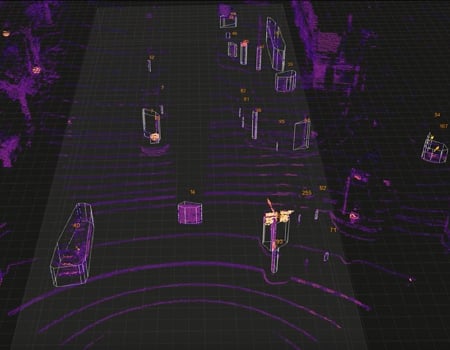
The object detection and tracking solution, based on lidar sensors, combines two methods:
- A clustering method that does not require a priori knowledge of the objects
- A deep learning-based method that requires a prior annotated object database
Tracking is carried out using a multi-sensor fusion application.
- It can take as input up to 5 sensors of different types:cameras, lidar, cameras
- An extended Kalman filter is used to estimate the velocity and position data.
- A Bayesian network is used to confirm the type of objects
The solution operates in real time.
LIDAR-BASED TRACKING
Lidar-based tracking techniques allow a robot or a vehicle to locate itself in environments where GPS is not or only partially available: in urban areas or in indoor environments such as car parks or storage sheds.
To cover the largest number of applications we have developed two lidar-based tracking solutions:
- 2.5 d type tracking: suitable for motor vehicles, shuttles or trams in road-type environments
- 3d type tracking: suitable for all vehicles, but also for vehicles and robots that have to operate partly in indoor environments such as car parks or warehouses
2,5d tracking
- Accuracy vs. GPS-RTK
- Average value: 0 cm
- Standard deviation: 6-7 cm
- Map size: 10 MO/km
- Available in ROS or RT-Maps
- Map building tool available
- Works with most lidars
3d tracking
- Acuracy vs. GPS-RTK
- Average value: 9 cm
- Standard deviation: 2-3 cm
- Map size: 50 MO for a volume of 100mx100mx100m
- Available in ROS and RTMaps
- Map building tool available
- Works with most lidars
AUTONOMOUS DRIVING MODULAR LIBRARY
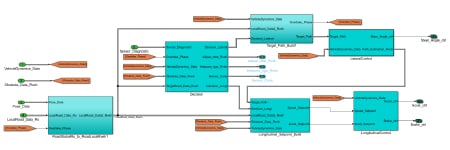
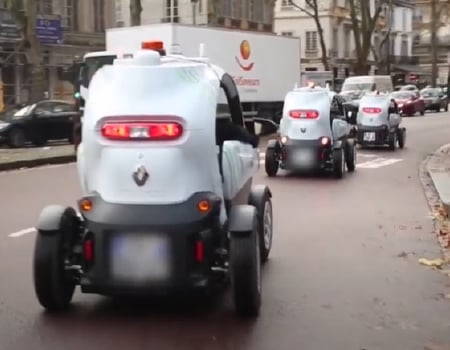
This library is adapted to the autonomy phases of various vehicles in urban or suburban environments: cars, shuttles or buses.
It includes the following main modules:
- Trajectory tracking
- Speed control according to the curvature or maximum allowed speeds
- Consideration of infrastructure (traffic lights, pedestrian crossings, etc.)
- Adaptation of the speed according to the presence or absence of obstacles on the trajectory
It has the following options:
- Overtaking/events
- Roundabouts
- Reverse, platooning, trajectory generation, safe trajectories
It is based on a Simulink software library
- Real-time portability to MicroAutobox, ROS or RTMaps environments
- A dynamic vehicle model is also available for working in MIL and SIL modes.
PARKING VALET LIBRARY
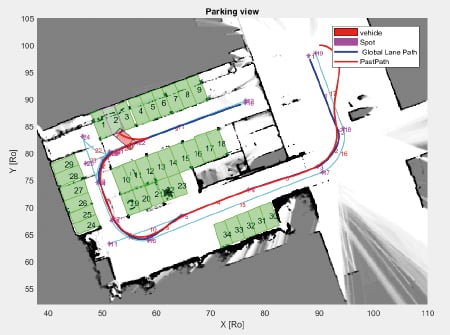
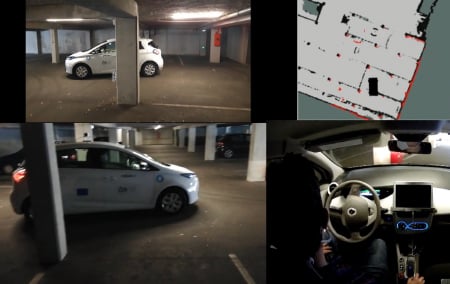
The Parking Valet solution offers a complete solution for the fully autonomous implementation of parking phases.
It is based on the other Sherpa solutions:
- The Autopilot solution
- The tracking solution
In addition, it uses specific tools for
- Construction of parking maps
- Multiple manoeuvres
- Obstacles and vacancy detection
It can be used for different vehicles and environments
- Private cars, buses, trucks
- External or internal parking on one or more floors
- Tight parking thanks to multiple manoeuvring functions
It works with entry-level sensors and computers: 16-sheet Lidar, IMU MTI 100 or Nvidia Jetson type computer.
PERCEPTION KITS
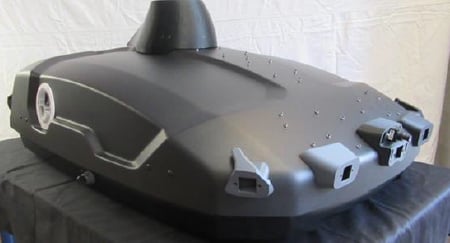
We offer perception systems for real-time collection and processing of perception data.
They have the following main characteristics:
- integrate various perception sensors: cameras, lidars, GPS, etc.
- Data is synchronised and time-stamped
- Kits are portable from one vehicle to another
Based on standard electronics, the mechanical and electrical integration is customised according to the customer’s specifications: data to be recorded, recommended sensors, desired autonomy, maximum weight.
For further information: read the whitepaper
Conception of a high-level perception and localisation system for autonomous driving
Learn more: discover our perception and localisation platforms
You may also be interested in
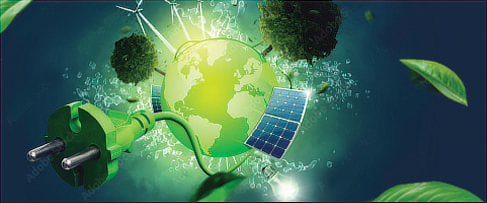
Our expertise fields
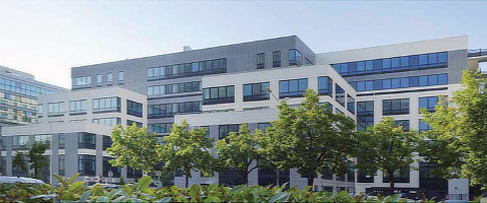
Who we are?
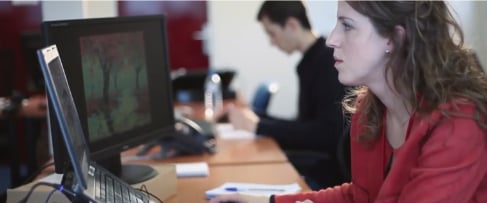
Join us

